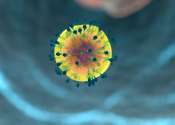CAR T cell therapy: On the cusp of 'an immunotherapy revolution'?
A deeper understanding of the immune system's role in controlling cancer has helped drive "an immunotherapy revolution," offering hope for many patients with previously incurable cancers, including children, doctors have ...







